Michigan’s level of asthma is higher than the nation’s, and Detroit’s is higher than Michigan’s.
This post examines this serious health issue by looking at the prevalence of childhood asthma in Detroit by zip code. The data presented here was provided by the Michigan Department of Community Health. Each map shows a different type of asthma indicator, ranging from the number of emergency room visits to whether or not asthma medications were distributed. Each zip code, except for the ones where data was unavailable, showed evidence of childhood asthma in 2012. Certain zip codes showed more prevalence than others. For example, 48207, the exception of the one showing prevalence of hospital visits. The 48234 area also showed prevalence of childhood asthma indicators, with the exception of the map that shows overuse of short acting beta-agnostics, which provide temporary relief for shortness of breath.
Overall, these data indicate these overall patterns for childhood asthma in Detroit in 2012:
Note: Some zip codes do not have data reported. This can be either because there were no cases or that there were so few cases that reporting was suppressed.
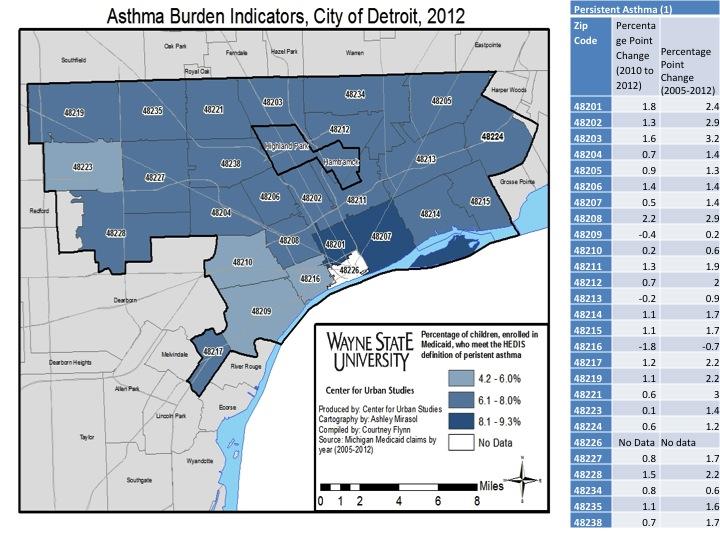
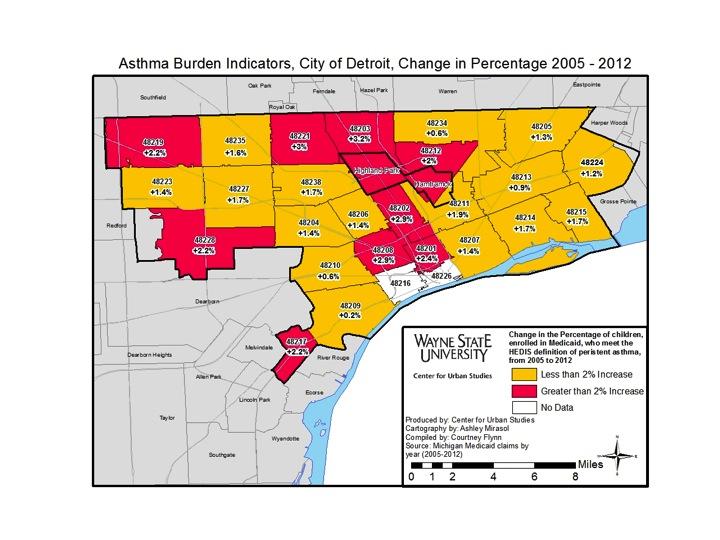
The map above shows the percent of children in 2012 who met the Healthcare Effectiveness Data and Information Set (HEDIS) standards for persistent asthma. According to the NCQA, which creates the HEDIS standards, is defined as at least one emergency department visit or one inpatient claim or four outpatient visits with two asthma medication dispensing events or at least four asthma medication dispensing events where asthma is the principal diagnosis. While zip codes 48207 and 48201 had the highest percent of children with persistent asthma (between 8.1 and 9.3 percent), it was codes 48203, 48221, 48202, 48208 and 48201 that experienced the highest percent point change from 2005 to 2012.
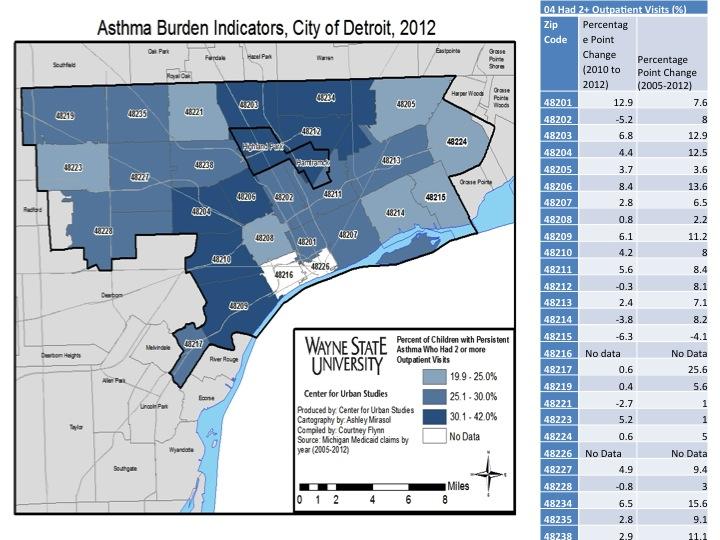
The map above, shows the percent of children with asthma who had two or more outpatient visits for persistent asthma. The table shows the percentage point changes from 2005 to 2012 were much higher for this indicator than the first one discussed. Many of the higher percentage point changes occurred in the zip codes where between 30.1 and 42 percent of children had two or more outpatient visits for persistent asthma.
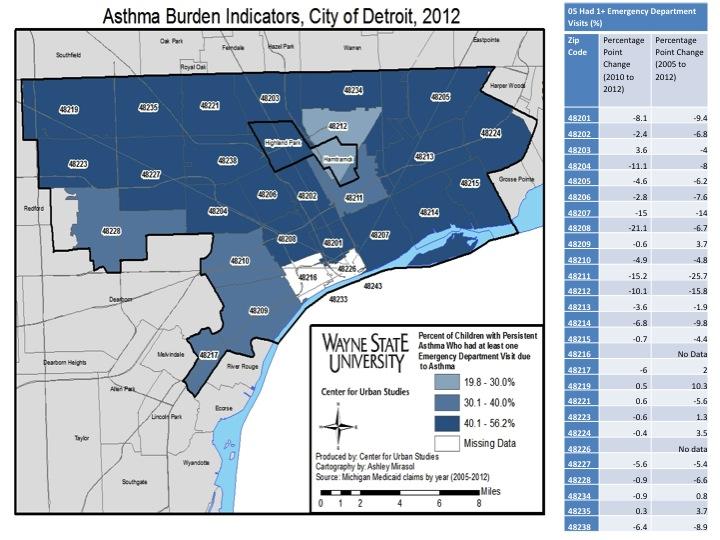
This map shows that majority of the zip codes that make up Detroit had between 40.1 and 56.2 percent of children with persistent asthma visit the emergency room at least once for this condition. The only zip code in Detroit where below 30.1 percent of children with persistent asthma visited the ER for this condition was 48212. This area also experienced a 15.8 percentage point decrease in the percent of such visits from 2005 to 2012. Zip code area 48211 experienced the highest percentage point decrease from 2005 to 2012 at 25.7 percent; this area was in the 30.1 to 40 percent category in 2012. Northwest Detroit’s 48219 zip code, had the highest percentage increase at 10.3; it also was in the highest grouping in 2012 for percent of children who visited the emergency room with persistent asthma.
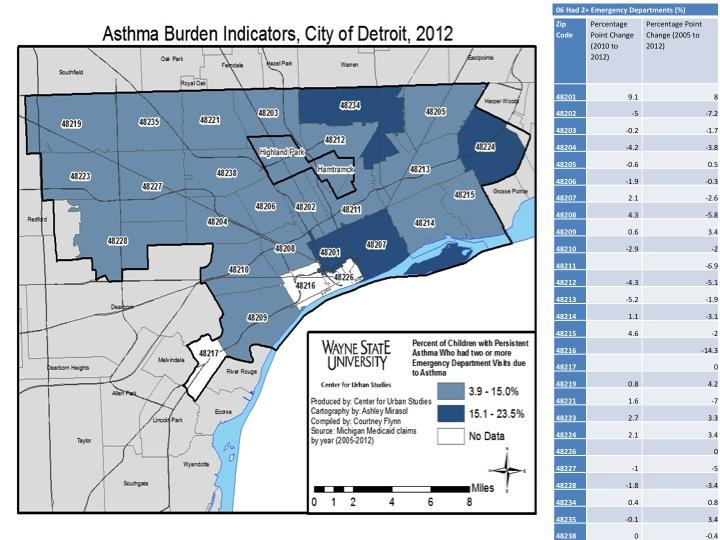
The percentage of children with persistent asthma who had two or more emergency room visits was much lower than the percentage who went to the ER at least once. In 2012 there were only four zip codes where between 15.1 and 23.5 percent of the children with persistent asthma visited the ER more than once because of the asthma. The zip code 48201, which was one of the areas where between 15.1 and 23.5 percent of the children with persistent asthma visited the ER more than once, also had the highest percentage point increase from 2005 to 2012 at 8 percent.
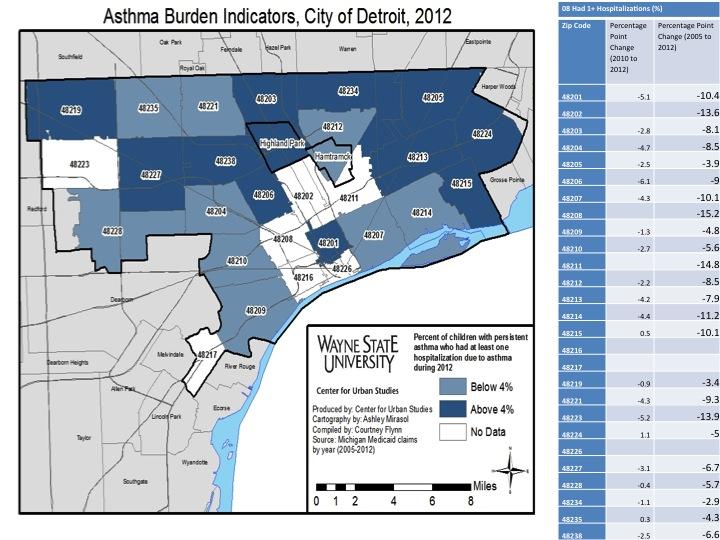
As with the decreased number of ER visits related to persistent asthma in Detroit children, the percentage of children with persistent asthma who had asthma-related hospitalizations decreased from 2005-2012. All of the zip codes in Detroit experienced a decrease, the highest being a 13.9 percentage point decrease in zip code 48223.
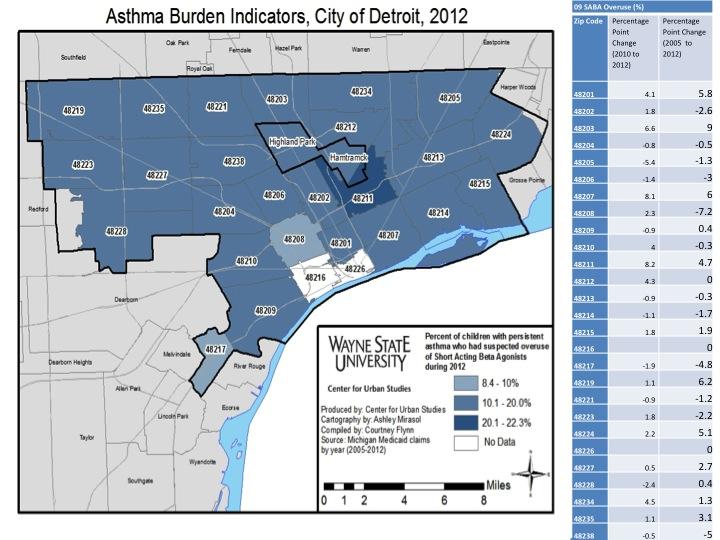
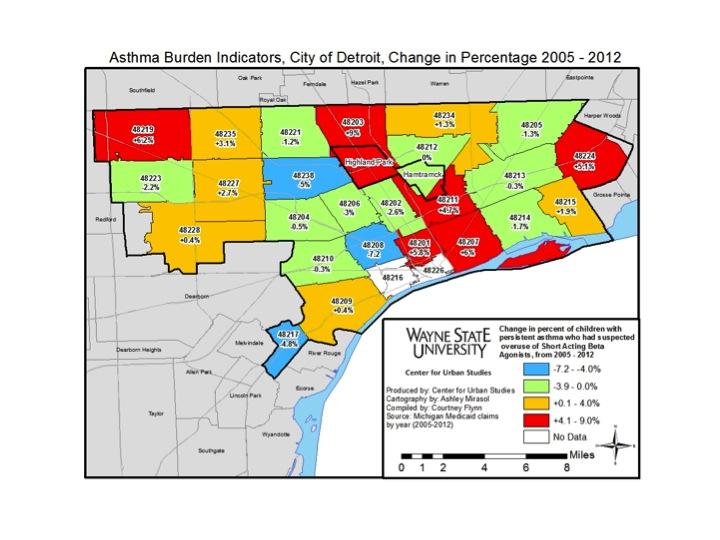
Throughout most of Detroit in 2012 between 10.1 and 20 percent of children with persistent asthma were suspected of overusing short acting beta-agnostics. These are medications used for short-term relief of asthma symptoms. The zip code area 48219 had the highest percentage point increase for this asthma burden indicator. The percentage point increase was 6.2.
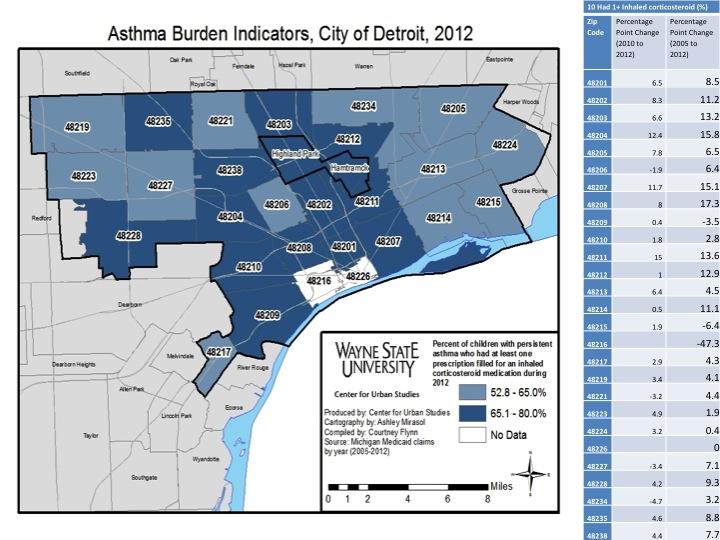
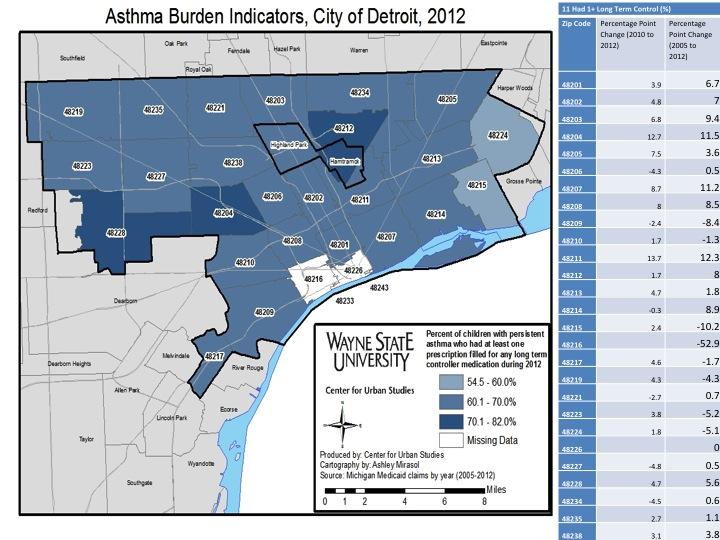
The two maps above show the percent of children with persistent asthma who used a given type of asthma relief medication in 2012. The first map shows the percent of children with persistent asthma who used corticosteroids, a type of steroid used to provide asthma relief. The second map shows the percent of children with persistent asthma who used longer-term medications. In both cases the use of these drugs increased in most zip codes.